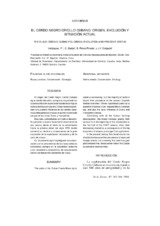El Cerdo Negro Criollo Cubano: origen, evolución y situación actual
The Black Creole Cuban Pig: origin, evolution and present status
Autor
Barba Capote, C.J.
Velázquez Rodríguez, F.J.
Delgado-Bermejo, J.V.
Pérez-Pineda, E.
Editor
Universidad de Córdoba, Servicio de PublicacionesFecha
1998Materia
EtnologíaConservación
Razas porcinas
Razas autóctonas
METS:
Mostrar el registro METSPREMIS:
Mostrar el registro PREMISMetadatos
Mostrar el registro completo del ítemResumen
The origin of the Cuban Creole Black pig is under a controversy, but the majority of authors locate their procedure in the ancient Spanish Iberian branches. Others hypothesis point out a possible influence of pre-hispanic Black Canarian pig, and also the early influence of Duroc and Hampshire breeds. Coinciding with all the Cuban farming development, this breed increase greatly their census from the beginning of the colonisation to the first half of the XVIIIth century, when their decreasing started as a consequence of the big expansion of tobacco and sugar Cain agriculture. In the present century this breed was in risk of extinction because the competence of improved foreign breeds, but presently this bred has gain god perspectives, because her role in the Cuban sustainable development. El origen del Cerdo Negro Criollo Cubano sigue siendo discutido, aunque la mayoría de los autores atribuyen su procedencia de los antiguos troncos ibéricos de España. Otras hipótesis plantean una posible influencia de los cerdos canarios prehispánicos e incluso el aporte reciente de sangre de las razas Duroc y Hampshire. Esta raza, coincidiendo con todo el desarrollo ganadero cubano, incrementó enormemente sus censos desde el inicio de la colonización hasta la primera mitad del siglo XVIII donde comenzó su declive a consecuencia de la gran expansión de la explotación tabacalera y de la caña de azúcar. En el presente siglo ha peligrado su conservación por la competencia de las razas selectas extranjeras aunque en la actualidad presenta unas excelentes perspectivas de recuperación dentro del desarrollo sostenible de Cuba.

